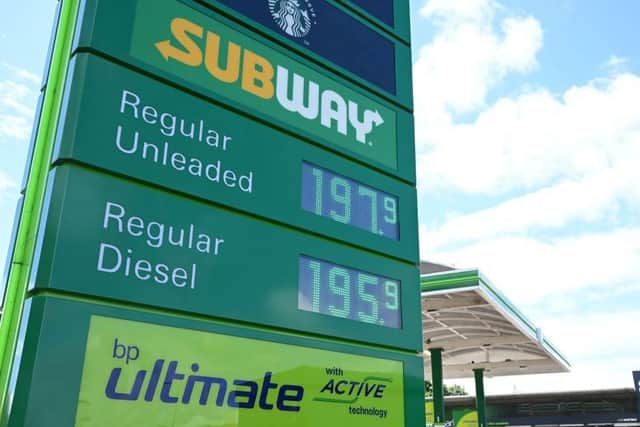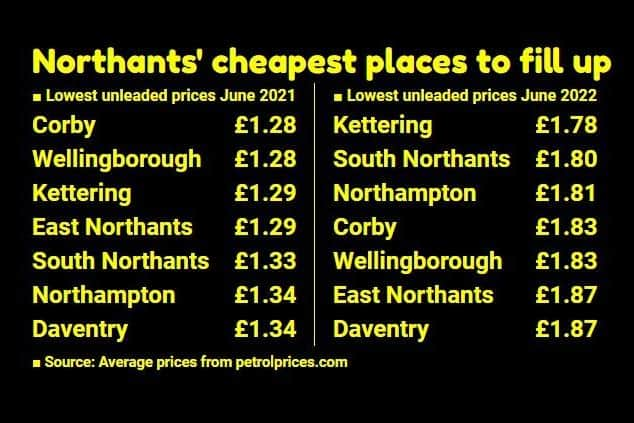Cost of living crisis: Where in Northamptonshire have petrol prices gone up most in last year?
and live on Freeview channel 276
Fuel prices have risen faster in some parts of Northamptonshire than others, sparking more accusations of retailers ripping off motorists.
Figures from price-checking website petrolprices.com show the average cost of unleaded soared by up to a whopping 44 percent since June 2021.
Advertisement
Hide AdAdvertisement
Hide AdGarages claim increases in wholesale costs are being fuelled by rising crude oil prices.


Pump prices in Corby, Wellingborough and East Northamptonshire have gone from being among the cheapest to the most expensive in the county.
Yet year-on-year fuel inflation in Northampton and South Northamptonshire was nearly ten percent less.
And the difference between the county’s cheapest prices, currently to be found in Kettering, has grown from six to nine pence per litre CHEAPER than just a few miles away.
Advertisement
Hide AdAdvertisement
Hide AdIn January, the RAC accused retailers of keeping prices unnecessarily high and taking extra profits while ministers also criticised garages for not immediately passing on a 5p fuel duty cut to customers announced in March.


The Petrol Retailers Association, which represents independent fuel retailers, welcomed a UK’s petrol watchdog review announced this week saying it would confirm the cut was passed on and that its members are operating on "razor-thin margins.”
The association's executive director, Gordon Balmer, said: “Briefings provided by government spokespeople to the media indicate that ministers don't understand how fuel prices are set.
“Petrol retailers have been unfairly scapegoated for rises in the wholesale price of fuel over which they have no control.”
Advertisement
Hide AdAdvertisement
Hide AdFurther figures from the RAC Foundation show petrol costs have risen by 42 percent across the UK in the last year, from an average 130.08 pence per litre in June 2021 to 185.04p on June 13 this year.
Jack Cousens, head of roads policy at the AA, said: “Those drivers hit hardest by record petrol and diesel are in low-income households, young drivers trying to make a start in life and rural residents forced to drive much higher mileages than most.”
Extra mileage for rural drivers is a critical issue for many motorists – an average car owner in London drove just 6.9 miles per trip in 2018-19, compared to 9.1 miles in the East Midlands, according to a DfT survey.
At current prices in Northampton, the same journey would cost an average of £2.07 compared to £1.54 last year.
Advertisement
Hide AdAdvertisement
Hide AdIn Corby, the same journey would cost an average of £2.10 – compared to £1.46 last year.
The RAC Foundation said people on lower incomes are hit hardest by fuel price rises as they are unable to switch to electric vehicles and often rely on cars to get to work with no alternative.
Steve Gooding, director of the RAC Foundation, said: “Only the Chancellor can realistically ease the burden on domestic budgets by stepping in and sharing some of the windfall VAT profits he has been making from sky-high pump prices with those who’ve been having to pay them, the driving public.”
The Treasury insists it has protected eight million most vulnerable households with £1,200 of direct payments this year.
A spokesperson added: “There has been no ‘VAT windfall’ – in March the Office for Budget Responsibility forecasted lower VAT receipts for this year than they did in autumn.”
